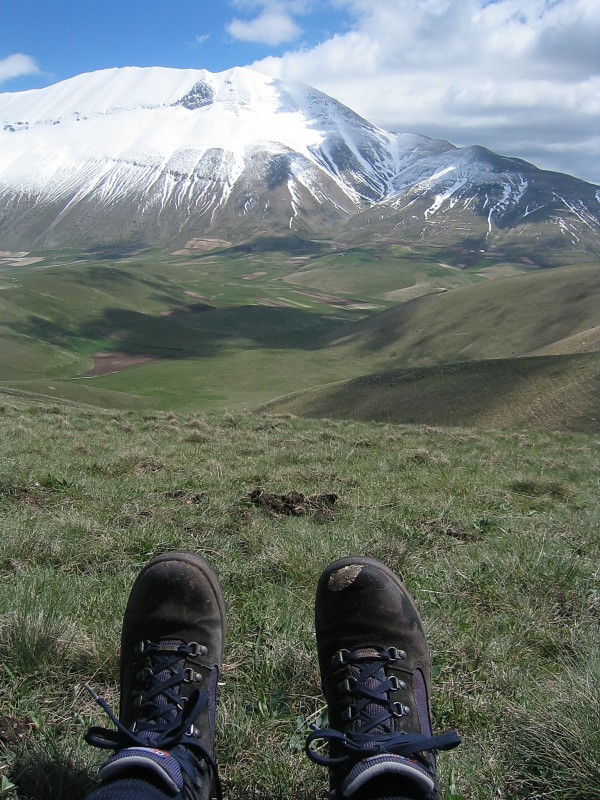Please find below a ‘generic’ packing list for all our holidays. Certain trips may require additional items – this information can be found in the trip-specific FAQs.
- Passport
- Visa (if applicable)
- Flight ticket
- Travellers cheques and/or credit cards; debit card for using ATMs and some local currency
- Route Booklet (independent trips)
- Insurance document
- EHIC (for EC residents)
- Daypack (for fleece, waterproofs, water bottle etc)
- Washing kit
- Personal first aid kit / Compeed for blisters Note: Tour Consultants on escorted trips carry a first aid kit with them at all times. People with serious allergic reactions, e.g., to food, wasps, bees, etc., are advised to consult with their doctors as our staff, all qualified practitioners of first aid with up-to-date certificates, are not permitted to carry or prescribe any form of medication.
- Sunhat
- Underwear, socks and nightwear
- Trousers/shorts comfortable for walking/cycling
- Cotton shirts/T-shirts
- Sweater/fleece – one light/one warmer
- Extra warm layers plus hat, gloves, etc for mountainous areas and early spring, late autumn or winter trips
- Training shoes (sneakers)
- Change of clothes for the evenings, including shoes
- Water bottle (or buy bottles water at airport/locally and reuse this bottle)
- Sunscreen – high factor
- Insect repellent
- Swimwear and towel (for those trips with swimming opportunities – pools/sea/hot springs or just hotels with spa facilities!)
- Beach shoes/swimming sandals for pebbly shores (as appropriate)
- Camera/memory cards/battery charger
- Lightweight binoculars
- Phrasebook/dictionary
- Guidebook, Flower/bird books etc. According to your interests
- Mobile phone/phone charger
- Earplugs
- Umbrella (foldaway)
- Travel plug(s)/electric adapter(s)
- Mild hand-wash detergent
- Torch (flashlight) Useful in caves/tunnels and if you are walking home from dinner after dark
- Waterproof map holder (if you are bringing maps or if you are on a cycling trip)
- Sunglasses
- Alternative spectacles for bifocal users
- Flip-flops/slippers
- Electric razor/Hairdryer (4 & 5* hotels should provide a hairdryer but other grades of hotel may not).
- Travel kettle and teabags (if you cannot do without…!)
Additional items for walkers
- Walking boots
- Walking socks
- Lightweight wind/waterproof jacket
- Lightweight waterproof over-trousers
- Trekking poles/walking stick
- Ankle/knee supports
- Bin liners to waterproof daypack
Walking boots: It is vitally important that your footwear is comfortable and appropriate. Unsatisfactory footwear can ruin your holiday. You are advised to bring walking boots with you, with good ankle support and a shock absorbing (Vibram-type) sole, and training shoes (sneakers) for easier days/sightseeing. Please make sure that boots/shoes are well broken in.
Socks are as important as boots. A blister is a friction burn, so wear socks of materials that absorb heat. There are various specialist walking socks on the market. ‘Loop-stitch’ 60% wool/nylon mix socks are worn by many of our Leaders. Avoid nylon socks. Some cotton socks can ‘clog and compress’ with sweat and also cause blisters. If you feel soreness whilst walking – stop immediately and check. If you find a blister forming cover the area with a generously sized piece of zinc oxide plaster or anti-blister plaster e.g., ‘Second skin’ or ‘Compeed’, and leave for a few days.
Trekking poles/sticks: These are becoming almost a standard piece of equipment for hill walkers, and a valuable safety item. By using a stick/pole (or even two), you increase the number of points of contact with the ground, aiding balance on rough or slippery ground and reducing the chances of taking a fall. They are also useful when descending steeper slopes, of which there are several on this trip! They take a great deal of stress off the ankles, knees and lower back, making injuries less likely. NB: Please check with your airline whether they can be taken as hand luggage.
For anyone seeking additional protection for potentially weak joints, we recommend that you consider bringing a flexible knee/ankle /etc. support with you, as you may not find it easy to purchase anything suitable locally. Simple ‘Tubigrips’ are moderately helpful, but considerably more supportive (though more expensive) is something along the lines of a ‘Supatherm’ sport support (sports shops), which provides good support in the most testing circumstances.
Clothing : Bring whatever clothes you find most comfortable for walking, including at least one pair of trousers as well as shorts.
You should ensure that you have a lightweight wind/waterproof jacket; please make sure that this is really waterproof, not just shower-proof. Waterproof over-trousers are desirable and a sun hat is advisable for all but the coolest times of year. Shirts with collars are a useful protection against a sunburnt neck. ‘Short’ shorts and sleeveless ‘sun’ tops are unsuitable for visiting churches.
Please do not walk in jeans, as these take ages to dry once wet; you can buy various (poly) cotton walking trousers from outdoors equipment retailers. We also recommend a long-sleeved walking shirt in case of cold weather, which allows you to perspire and dry, but still cuts out the cold wind (again, ask at outdoors shops for advice).
It can be cold in the evening and at night from late autumn to early spring, and in the mountains at any time of year. You may find that you need extra warm layers for keeping warm in the evenings, as well as for walking in, at higher altitude.

























 The best way to see a country is on foot! For an overview of all dates and prices across our
The best way to see a country is on foot! For an overview of all dates and prices across our  2025/2026 Tours For an overview of 2025/2026 dates, click here Idyllically located in unspoilt countryside between Siena – ‘the best-preserved,
2025/2026 Tours For an overview of 2025/2026 dates, click here Idyllically located in unspoilt countryside between Siena – ‘the best-preserved, 